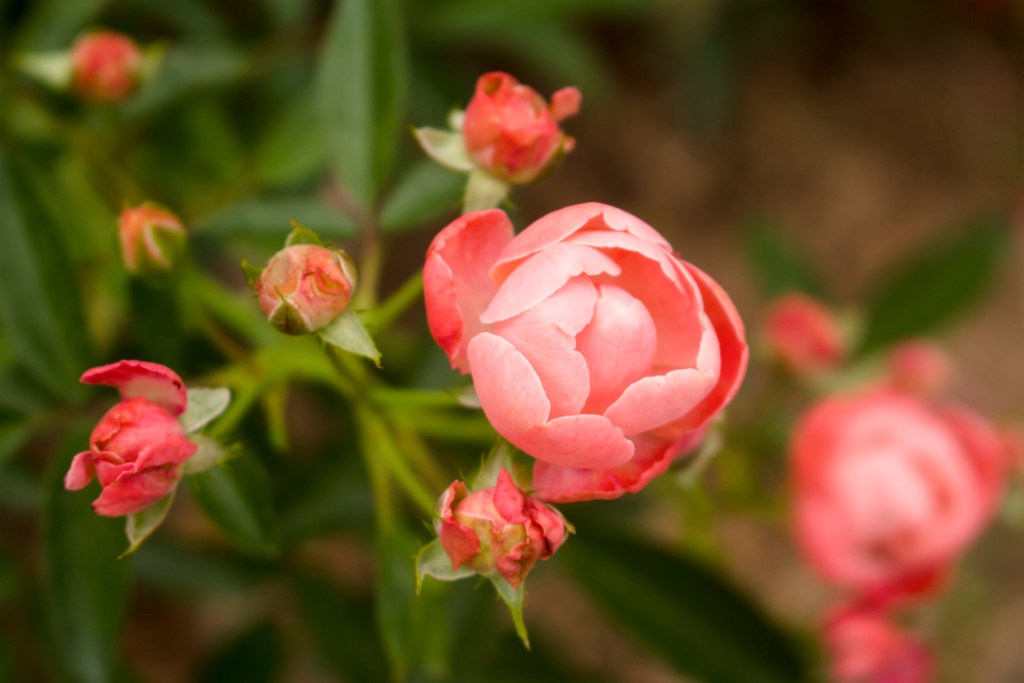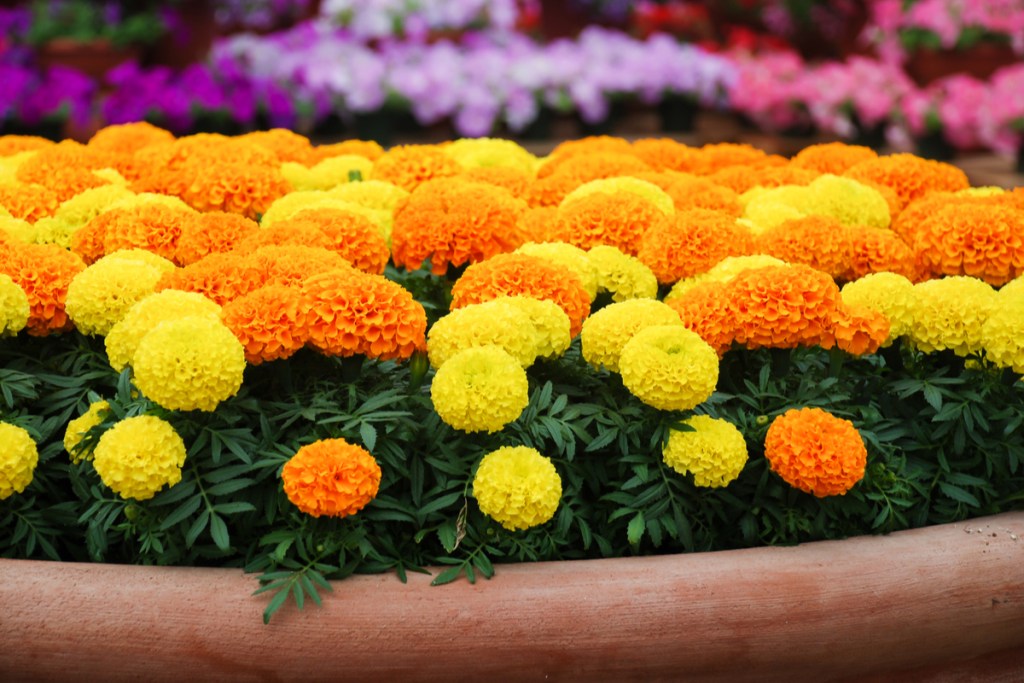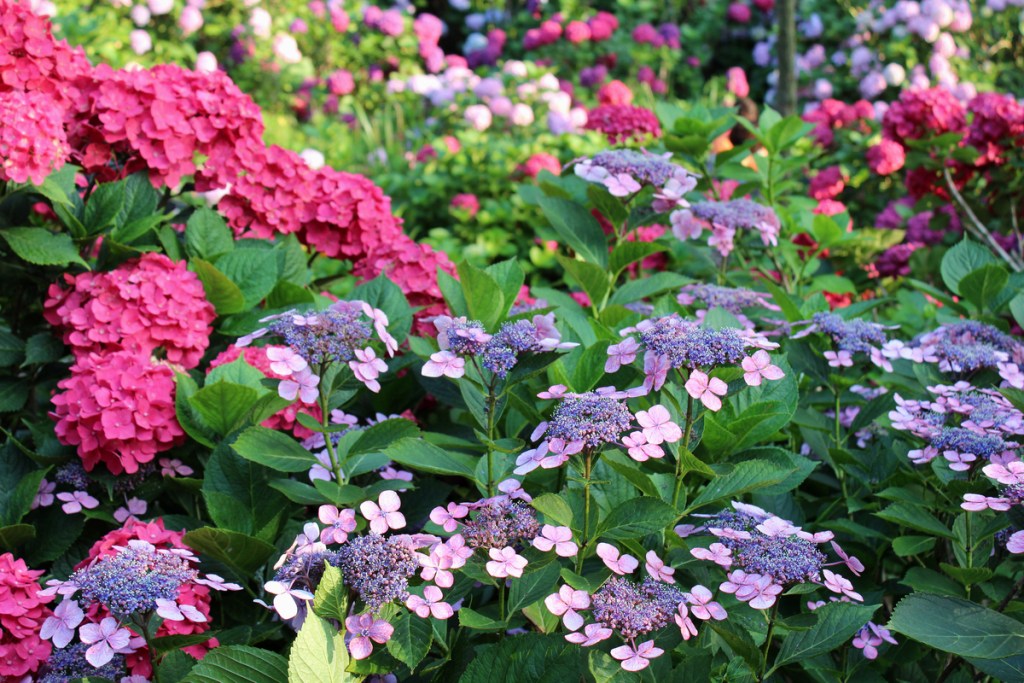Lovely as their blooms may be, roses can be tricky to grow, so that’s why careful companion planting is of the utmost importance for these delicate flowers. Even with a hardy variety like the widely beloved Knock Out rose, make sure you’re growing your flowers next to plants that offer benefits and don’t compete for resources. If you’re wondering how to dress up your garden with plants that complement your Knock Out roses, read on for our top picks.

What are Knock Out roses?
In 2000, William Radler introduced the Knock Out rose to the flower market, and it’s been a go-to in North American gardening communities ever since. Though roses are notoriously high maintenance, the Knock Out rose is an easy-going exception. While producing beautiful flowers from spring through autumn, Knock Out roses, hardy to zones 4 through 9, aren’t prone to the issues that conventional roses face.
Growing up to a compact 3 to 4 feet tall, the Knock Out rose bush is low maintenance and resistant to both pests and diseases. This bush thrives in full sun and can tolerate some drought. You’ll want to fertilize the soil monthly for long-lasting blooms, which you don’t necessarily have to deadhead. In the late winter or early spring, prune your bush to shape it.

What grows well next to Knock Out roses?
Though Knock Out roses are tough all on their own, they benefit from companion planting. First, there’s the matter of aesthetics to fill out a rose garden — while roses look great on their own, they look even more gorgeous in the right company. Plus, suitable companion plants also deter pests and share similar watering and sunlight needs with healthy rose blooms. Here are a few great companion plants for Knock Out roses.
Lavenders
With their cup-shaped flowers, roses look great next to flower spikes. Lavenders certainly complement roses, but the compatibility between these flowers isn’t merely visual. Lavenders help deter rabbits and deer while attracting pollinators. Like Knock Out roses, they thrive in well-draining soil and can tolerate a bit of drought.
Marigolds
Marigolds add texture and warmth to a flower garden with crepey gold blooms. They’re also great with roses because they help prevent pests while drawing in beneficial insects and pollinators. Plus, marigolds are hardy in zones 2 through 11, so they can grow in many areas for early summer blooms. Place your marigolds in full sun and water them weekly throughout the growing season.
Creeping thyme
Creeping thyme works as a complementary ground cover beneath your roses, especially where it’s perennial in zones 5 through 9. While Knock Out roses are naturally resistant to pests, creeping thyme will further deter pests, such as Japanese beetles and aphids. Creeping thyme is also hardy and can tolerate full sun, producing delicate flowers that attract bees.
Alliums
Alliums encompass kitchen pantry staples, such as onion, chive, scallion, shallot, leek, and garlic. The pungent smell that these plants produce is off-putting to many pests, especially aphids that can wreak havoc on roses. Plus, they can prevent diseases such as black spot disease. Like roses, alliums do well in full sun and well-draining soil. On top of all of these beneficial properties, they also produce delicate blooms that pair well with Knock Out roses.
Verbenas
Ideal for zones 5 through 10, verbenas complement roses because they’re low-growing flowers and hide leggy lower branches. The long-lasting summer blooms come in shades of blue and purple, coinciding with spring and summer Knock Out rose blooms. Additionally, verbena herbs are heat tolerant and do well with full sun and well-draining soil, just like roses.

What should you not plant around Knock Out roses?
Though Knock Out roses are less prone to disease, they still benefit from the basic needs that you’d give to any variety of roses. Roses do best in full sun, and any plant that covers them or requires full shade is problematic. They also need space, so aggressive growers, such as wildflowers, aren’t ideal companion plants. And though they appreciate deep watering in the summer, roses are sensitive to wet feet, so they won’t thrive next to a plant that needs moisture-retentive soil.
Read on to learn what plants you don’t want to keep next to Knock Out roses. That said, your garden conditions and plant varieties will play into whether you can grow a particular cultivar alongside roses. If you want to grow these plants, consider placing them in separate containers and plant stands as opposed to in the ground next to your roses.
Hydrangeas
Although the lush blues and purples of hydrangeas can complement roses, hydrangeas aren’t necessarily the best flowers to plant next to roses. These papery flowers conflict with what roses need because they require moist soil and ample shade to thrive.
Large trees and shrubs
Though trees and shrubs can add dimension to your garden, be careful about having them around your Knock Out roses. They take up nutrients and water, as well as block out light. Consider growing a compact hedge such as boxwood next to your roses.
Fuchsias
Fuchsias are undeniably attractive with their bold hanging blooms, and their drooping growth can definitely complement rose cups. But like hydrangeas, they require a lot of shade and moisture, which makes them incompatible with roses.
Roses might have a reputation for being nearly impossible to please, but you’re off to a great start with a resilient variety like the Knock Out rose. Even if they’re not dramatic, Knock Out roses benefit from garden bedfellows that not only look great but also draw in beneficial insects and ward off pests. From creeping thyme to marigold, you’ll have a wide range of choices for suitable plants to grow alongside your Knock Out roses.
Editors' Recommendations
- Plant these stunning flowering shrubs for a showstopping garden display this spring
- 3 incredible reasons why you should be using coffee grounds in your garden
- Have a gross mealybug infestation on your plants? Try one of these remedies
- These plants should be among the first you plant this year
- Unique and whimsical flowers to add to your collection for a fairy-tale garden landscape this spring




